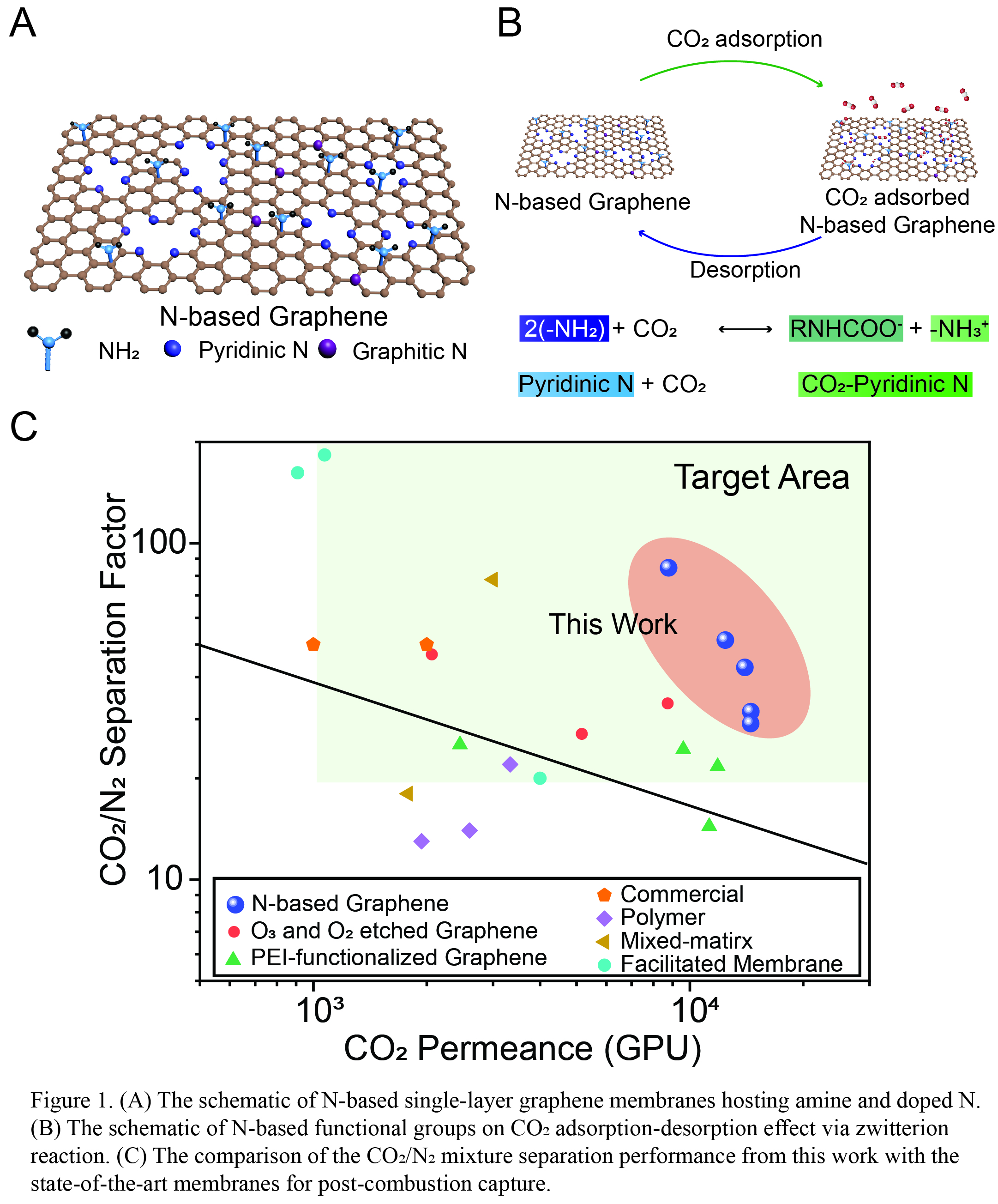(562d) Atomically Thin N-Based Graphene Membrane with Enhanced Adsorption and Size-Sieving Effect
AIChE Annual Meeting
2022
2022 Annual Meeting
Materials Engineering and Sciences Division
Two-Dimensional Materials and Thin Films
Wednesday, November 16, 2022 - 4:15pm to 4:30pm
In this presentation, I will introduce new N-based graphene hosting atomic-scale functional groups on the pore edges (Figure 1). Briefly, NH3 was introduced into the O3-treated graphene lattice via reacting with the O-functional groups on the graphene lattice4. This leads to the formation of amine groups and doped N on the graphene surface. CO2 chemisorption was observed via zwitterion reaction by near ambient pressure X-ray photoelectron spectroscopy, providing insights into CO2 adsorption coverage on the graphene nanopores. High-resolution transmission electron microscopy (HRTEM) images showed that N functional groups partially covered the pore size, proving that functional groups narrowed down the effective pore size for molecules to translocate.
Next, I will discuss the gas separation performance of N-based graphene by enhancing CO2 adsorption and size-sieving. The molecular cut-off narrowed down to less than 0.2 Å, leading to O2/N2 selectivity of 6.0 with 1630 GPU of O2 permeance. Apart from that, the atomic-scale amine groups and doped N on the pore edge preferentially adsorb CO2 on the graphene lattice, leading to apparent activation energy down to 0.9 kJ mole-1. This yields CO2 permeance of 8900 GPU and a CO2/N2 separation factor of 140 for N-based graphene membranes.
References
(1) Wang, L.; Boutilier, M. S. H.; Kidambi, P. R.; Jang, D.; Hadjiconstantinou, N. G.; Karnik, R. Nat. Nanotechnol. 2017, 12 (6), 509–522.
(2) Huang, S.; Li, S.; Villalobos, L. F.; Dakhchoune, M.; Micari, M.; Babu, D. J.; Vahdat, M. T.; Mensi, M.; Oveisi, E.; Agrawal, K. V. Sci. Adv. 2021, 7, eabf0116.
(3) Hsu, K.-J.; Villalobos, L. F.; Huang, S.; Chi, H.-Y.; Dakhchoune, M.; Lee, W.-C.; He, G.; Mensi, M.; Agrawal, K. V. ACS Nano 2021, 15 (8), 13230–13239.
(4) Wang, X.; Li, X.; Zhang, L.; Yoon, Y.; Weber, P. K.; Wang, H.; Guo, J.; Dai, H. Science. 2009, 324 (5928), 768–771.
